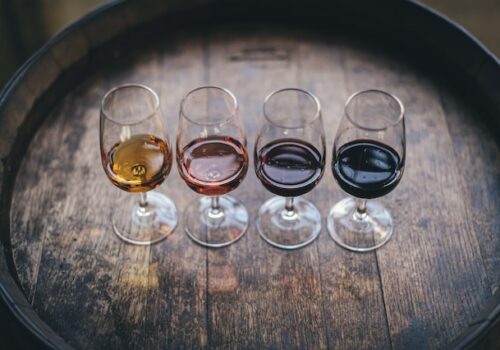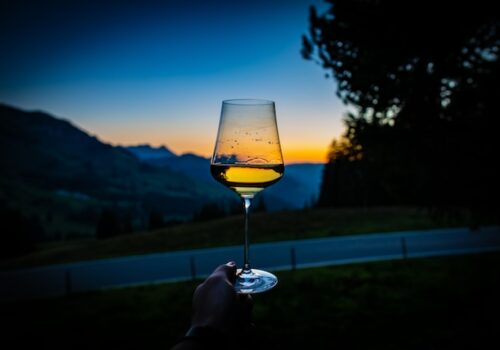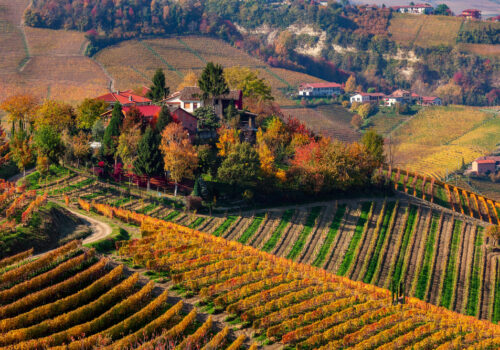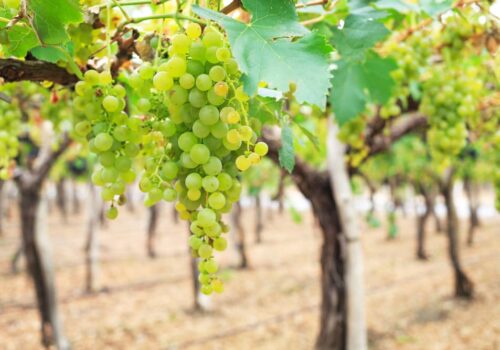Flaming character: a selection of orange wines
Orange wines have been made since ancient times, but they only gained popularity in the early 2000s when the fashion for naturalness in wine came. Georgia and Slovenia, where this style was known for a long time and was firmly kept in production throughout the twentieth century, got new admirers of their wines. And winemakers in Portugal, Spain, France and Italy have begun to explore historical versions of orange wine in their regions. As for other wine-producing countries, they happily joined the “orange” trend.
What is orange wine?
Orange wines are made by fermenting white grapes in contact with the skins, so they are also called skin contact wines. Most commercially available white wines are made by separating the juice from the skins immediately or shortly after the grapes arrive for production, which prevents the wine from staining.
The duration of maceration (the stage where the skins remain in contact with the juice) determines the intensity of the color of the finished wine. The temperature and the container used for fermentation and/or aging also play a role. In addition to color, maceration extracts tannins and aromatic compounds, so orange wines tend to have a bright character and pair well with food. These wines usually have an herbal, savory flavor backed by delicate tannins and firm acidity that brings the flavors of food to life,
In this selection, we present five interesting orange wines from some of the best producers from around the world.
Badagoni Alaverdi Tradition White.
Let’s start our selection with a wine from Georgia, where the tradition of making wines with skin infusion is one of the oldest. Badagoni Alaverdi Tradition White is made from the local rkatsiteli variety. After the grapes are pressed, the must, together with the skins and a small number of clusters, is placed in a clay fermentation amphora completely buried in the ground. This helps to maintain an optimal temperature throughout the fermentation, which lasts about a year. The finished wine evokes notes of apricot jam and dried fruit, while the taste is full of tart, fruity aromas.
Zorah Heritage
Armenia is another country that keeps the ancient traditions of winemaking. The proof is Zorah Heritage wine, made from local Chilar, a vanishing variety. Just like the previous wine, after pressing the must is fermented in contact with the skins in clay amphorae. However, there is still a difference – the amphora is buried only halfway. At the end of fermentation the wine is placed in the same vessels for 9 months and then kept in the bottle for another 10 months. The result is a wine whose aroma is full of fresh fruit notes with a smoky touch, and whose taste is full of citrus and almond tones.
Movia Sivi Grigio Ambra
Movia company from Slovenia is known for its natural approach to winemaking. The presented wine is made from late harvest Pinot Grigio, grown according to the biodynamic principles, i.e. with minimal interference in the production process. The wine is infused on the skins for 10 days and then sent for fermentation with natural yeast. After that the wine is poured into oak barrels, where it is aged for 18 months. Then it is bottled and aged for another 4 months. The result is a wine with bright tones of figs, spicy herbs and caramel. The taste echoes the aromatic notes, adding a slight mineral touch.
Primosic Ribolla di Oslavia Riserva
Primosic Ribolla di Oslavia Riserva is made from the Ribolla Jalla variety, considered traditional for northern Italy. To make it, the grapes are left on the vine for a longer period of time so that they become a little overripe. After harvesting, the sorted berries are sent to the factory where they are pressed and the resulting juice is sent for fermentation. The skins are also involved in the fermentation process. The must is then poured into barrels for further fermentation and aging. The wine spends two years in barrels, then it is bottled and sent to the cellar for a year. Thus, the wine appears on the shelf only on the fourth year after the harvest. The aroma of the wine has hints of sweet spices, acacia flowers and yellow fruits, while the taste is full of spice and apricot notes.
Siegel Naranjo Viognier
The production of orange wines is not bypassed by the New World, for example, the Siegel Naranjo Viognier from Chile. It is made from aromatic Viognier varietal grown in the Colchagua Valley. After pressing, the wine is infused on the skins for a while and then sent off for fermentation. The wine is then poured into French oak barrels, where it spends about a year. The aroma of the wine has notes of sweet spices, dried fruit, white flowers and dried peaches. The taste has nutty and fruity nuances.




